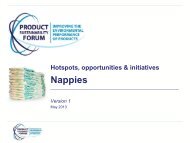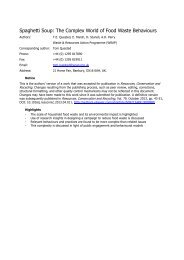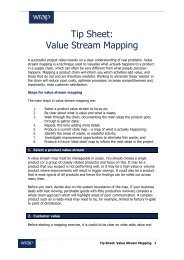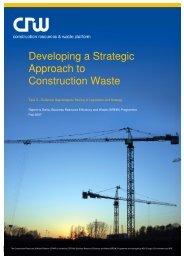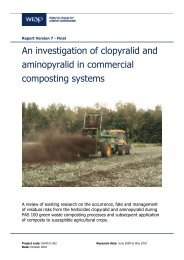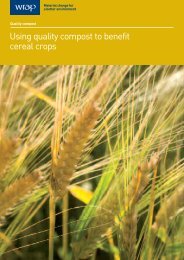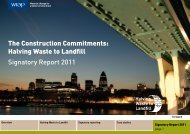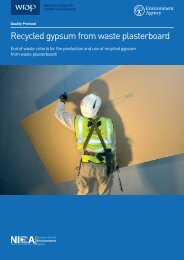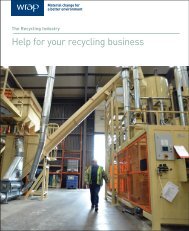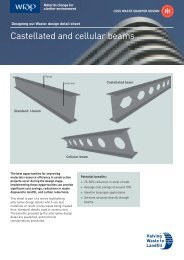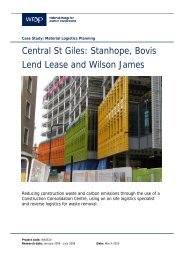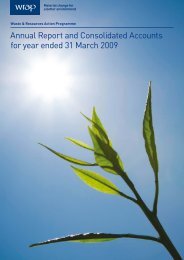Recovering value from MRFs (754.52 KB) - Wrap
Recovering value from MRFs (754.52 KB) - Wrap
Recovering value from MRFs (754.52 KB) - Wrap
- No tags were found...
Create successful ePaper yourself
Turn your PDF publications into a flip-book with our unique Google optimized e-Paper software.
Understanding <strong>MRFs</strong> Processing recyclablesSeparating fibre <strong>from</strong> containersIn a MRF accepting fully co-mingled materials, one of the firstprocessing steps involves separating fibre streams (i.e. paper, card,cardboard) <strong>from</strong> container streams (i.e. cans, plastic bottles, glassbottles/jars). A trommel screen typically is used for this purpose inthe UK. In North America disc screens are more common. Dependingon the size of the MRF, several stages of screening may be involved.The overall aim is to enable separate fibre and container streams toundergo appropriate sorting.Sorting fibreTo meet market specifications, fibre needs to be sorted into itsvarious grades. Typically, <strong>MRFs</strong> in the UK sort three grades of paper:OCC (old corrugated cardboard), news & pams (periodicals andmagazines), and mixed paper. Some <strong>MRFs</strong> only sort into OCC andmixed paper whilst some <strong>MRFs</strong> in North America sort into six grades.Sorting can be done (i) manually, (ii) using disc screens or (iii) usingmore advanced optical scanners. Smaller <strong>MRFs</strong> tend to rely onmanual sorting, while larger facilities use disc-screens. The useof optical scanners is relatively new and, due to high capital cost,generally confined to high-throughput <strong>MRFs</strong>.Manual sorting at a MRF.<strong>MRFs</strong> that ‘negatively sort’ paper (i.e. allow it to run off the end of theconveyor belt after other materials should have been extracted) haveexperienced quality-related problems when the materials have beenshipped to UK paper mills. In some cases, loads that do not meet UKmill specifications are shipped overseas for recycling.The quality standards set in the UK do not have the clarity of thespecifications used in some other countries. <strong>MRFs</strong> in the UKfrequently appear to be guided by rather broad specifications (e.g.



